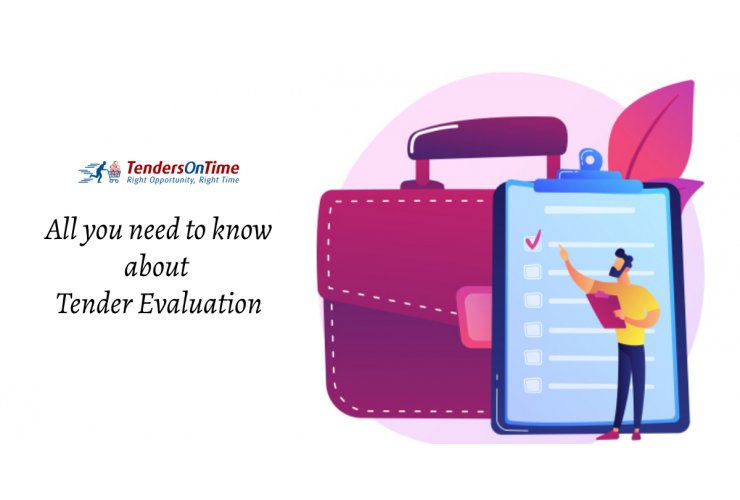Login
Login
Register
Complete Your Profile
Change Password
Request a Password Reset
Download Documents
Download Documents
Get Help to Participate in This Tender
Change Password
For better security, update the account password.
16 Sep 2021| Posted by Magnus | In Other Services

The tender notices are been published by buying/tendering authorities on their respective websites and various other mediums like local and national newspapers, aggregating websites. The ones (bidders/contractors) who are interested submit their commercial and technical proposals along with pre-qualified bids within the allowed timeline. Once this is done the actual process of evaluation begins.
Stages of tender evaluation
Pre-qualification:
A set of qualified and relevant team members of the buying/tendering authorities form a committee to evaluate the tenders. On the pre-announced location, date and time the pre-qualification bids are opened in front of the representatives of bidders. During this process, a checklist is used as a reference to select bidders whose technical/financial bids would be opened later as per the tender schedule/notice. As per the checklist followed by the tender evaluation committee, it covers details as follows along with supporting documents:
a. Audit reports of last 3 – 5 years
b. Relevant license to carry out the project in a given region/territory
c. Necessary background infrastructure required to run the project
d. Necessary industry certifications
e. Important mandatory documents like PAN/TIN number, sales tax/VAT/registration certificates etc.
EMD – Earnest money deposit enclosed
The committee examines pre-qualified bids to check their completeness of it, the required documents are signed or not, is required EMD enclosed and does it have all the supporting documents. If any of the bid doesn’t have the minimum requirements or is non-responsive in any of the criteria according to the bidding documents is been rejected by the committee without any intimation.
Evaluation of technical bids: For the bidders who were successful in clearing the first step of pre-qualification, the next step is to clear the technical aspects concerning the requirements mentioned in the bidding document. Tendering authority uses a point-based system between 0 to 10 (with 0 being the lowest and 10 being the highest), to rate each of the bidders on lines of below mentioned criteria:
a. Bidding organization’s capability in terms of compliance checks, current licences and relevant certificates etc.
b. Relevant experience
c. Past performance in the same field
d. Relevant resources/manpower availability for the project
e. Requirement understanding, and solution design as per technical specification
During the assessment of technical evaluation, a certain score between 0 – 10 is given for each criterion, multiplied with its weightage and finally add it to get the final score. There are few tender notices where complex assessment is done during evaluation along with additional criteria that are considered which are not concerned with a simple assessment.
It’s the method adopted by the tendering authority during the time of bid evaluation, to arrive at the final shortlisted bidder/contractor. Depending on the type of project that buying/tendering authority is releasing as tender notice, they decide on the tender evaluation method.
The percentage of cut-off is decided by the tendering authority and the bidders who score more than the mentioned percentage would be considered for financial bid evaluation. Once this is done by the authority the bidders who scored more than the cut off percentage are invited.
Evaluation of financial bid:
In the financial bid evaluation, the lowest commercial bid is designated as B1, second-lowest as B2 and so on.
Considering an example for the calculation to understand the scoring of B1, B2 and B3 bidders.
Say B1 gets 75 points. Then B2 score would be calculated as follow:
B2=75-(75/B1*(B2-B1))
Similarly, for B3 score would be calculated below:
B3=75-(75/B1*(B3-B1))
Finally, the total points scored = Technical bid evaluation point + Financial bid evaluation point
Shortlisted bidder & deciding award of contract: Once the shortlisting of bidders is done, they are called for negotiation and project-related discussion. During these discussions, buying authority and the bidder both get a chance to clarify their doubts or discuss the project implementation details, product design details, cost negotiation etc. Most of the time discussion is managed by the administrator, they might be few people from the finance or project team who would be to clarify the queries related to it. Once both sides have finally achieved clarity a final contract document or Letter of Award (LOA) is issued to the bidder.
After this, the evaluation process is completed and the results are declared, where all the authorities that participated are intimated about the details of the contract awarded via buying authority website or by sending intimation emails to the participating bidders. The bidders who got rejected can ask the buying authority for their score details and information about the criteria where they lacked due to which they got rejected and improve the same.
Summing up:
Did you know MEAT: is the most widely used tender evaluation technique all thanks to its all-rounded assessment model? MEAT stands for “Most Economically Advantageous Tender”. It involves measuring as well as selecting the best out of the incoming bids based on factors that are related to the subject matter of the contract. It takes into account components like Cost, Quality, and Technicality of various bid proposals while finalizing a contract award.
Hence, It is essential for Bid Managers, Suppliers, and Contractors to understand all tender assessment methods and then go forward with their submissions to avoid disappointment. TendersOnTime is the one-stop shop for all your tender searches making it the best e-tendering procurement portal.